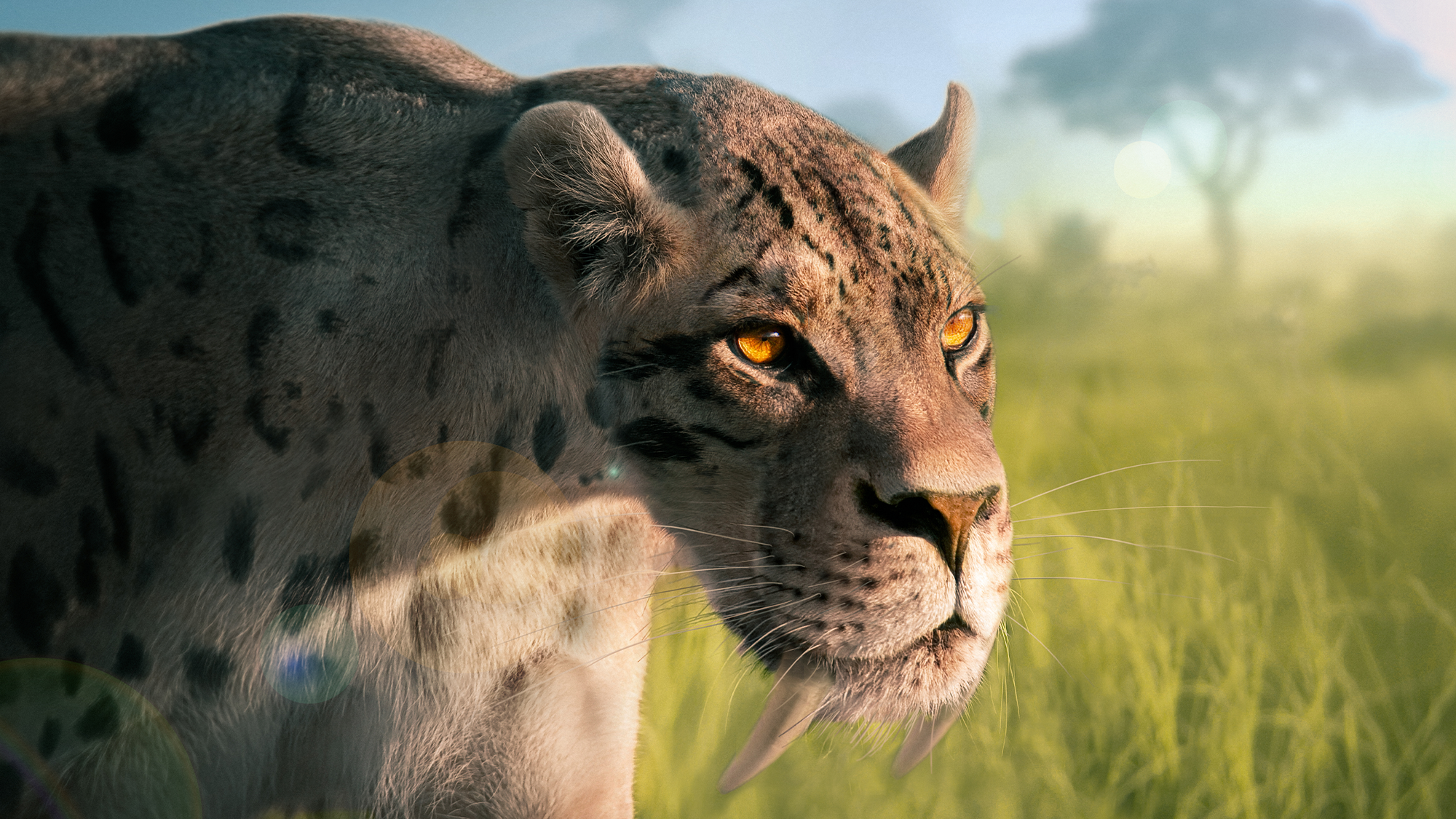

If the mighty Ice Age sabertooth tiger called out in a forest, and no one was around to hear it, did it even make a sound? A team of researchers from North Carolina State University set out to answer that philosophical question by investigating if sabertooth cats had a throaty purr or a mighty roar. They found that tiny bones in the tiger’s throat might present a more nuanced answer. Their findings were published August 21 in the Journal of Morphology.
[Related: Life in Los Angeles was brutal for saber-toothed cats.]
Present-day cats belong to two subfamilies who make different vocalizations. The pantherine or “big cats” include lions, jaguars, and tigers who typically roar. Felinae or “little cats” includes domestic cats, ocelots, lynxes, and cougars who purr. For cats that roar, the structures that surround their larynx (or voice box) generally aren’t stiff enough to make the purring sound.
“Evolutionarily speaking, sabertooths split off the cat family tree before these other modern groups did,” study co-author and NC state biologist Adam Hartstone-Rose said in a statement. “This means that lions are more closely related to housecats than either are to sabertooths.
Vocalization is driven by the larynx and soft tissue in the throat, not bones. However anatomists noticed that the bones responsible for anchoring those tissues in place called the hyoid bones differed in both number and size between purring and roaring cats.
“While humans have only one hyoid bone, purring cats have nine bones linked together in a chain and roaring cats have seven,” co-author and NC State Ph.D. student Ashley Deutsch said in a statement. “The missing bones are located toward the top of the hyoid structure near where it connects to the skull.”
According to the team, sabertooth tigers only have seven bones in their hyoid structure, but the shape and size look eerily similar to some purring cats’ bones. If vocalization is related to the number of bones in the hyoid structure, then the sabertooths roared. However, if it is about shape, they may have purred.
“You can argue that since the sabertooths only have seven bones they roared, but that’s not the whole story,” said Hartstone-Rose. “The anatomy is weird. They’re missing extra bones that purring cats have, but the shape and size of the hyoid bones are distinct. Some of them are shaped more like those of purring cats, but much bigger.
[Related: Orangutans can make two sounds at the same time.]
According to the team, if the missing bones (the epihyoid bones) were the key to different vocalizations, then the bones that are most closely connected to them should appear different between purrers and roarers. Those bones actually looked very similar in shape in the purring variety of cats.
The team saw more shape variation in the bones that are closer to the vocal apparatus, like the the thyrohyoid and basihyoid bones. Having these key hyoid bones shaped like those belonging to purring cats may indicate that they purred like a kitten instead of roaring like a lion, but it is still a bit of a prehistoric mystery.
“It is perhaps most likely that the size of the hyoids plays a role in the pitch of vocalization,” said Deutsch. “Although Smilodon wasn’t quite as big as the largest modern cats, its hyoid bones are substantially larger than those of any of their living relatives, so potentially they had even deeper vocalizations than the largest tigers and lions.”